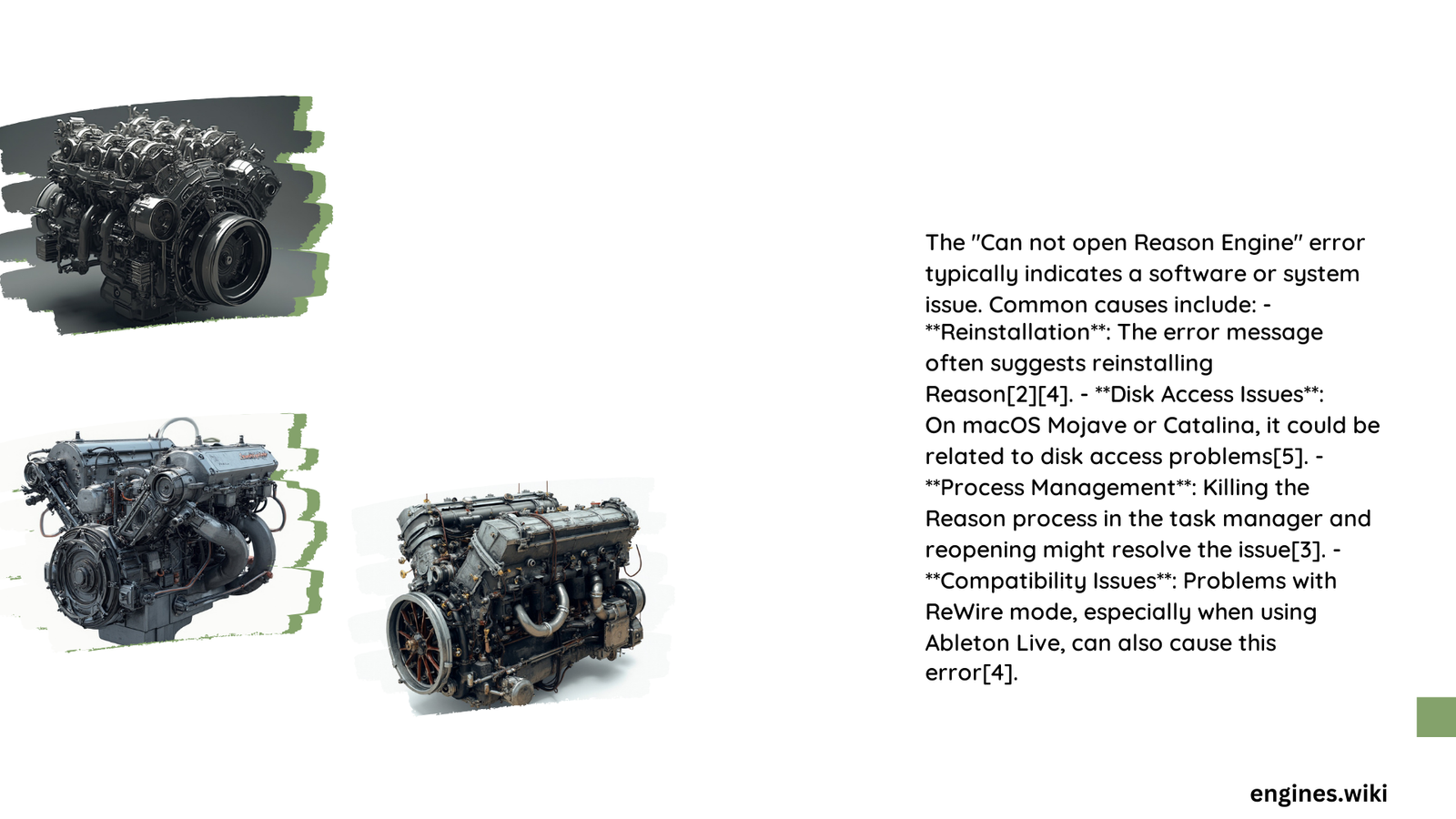Vehicle engine diagnostics can be complex and challenging, especially when encountering mysterious performance barriers. The ‘can not open reason engine’ scenario represents a critical intersection of mechanical and electronic systems where precise investigation becomes paramount. Technicians and vehicle owners must navigate a sophisticated landscape of sensor interactions, electrical connections, and computational logic to unravel underlying mechanical impediments.
What Causes Engine Opening Difficulties?
Root Diagnostic Approach
Vehicle engine opening challenges typically stem from multiple potential sources:
- Mechanical Barriers
- Seized engine components
- Excessive internal friction
-
Damaged crankshaft or camshaft mechanisms
-
Electrical System Complications
- ECU (Engine Control Unit) malfunction
- Sensor communication disruptions
- Wiring harness integrity issues
Diagnostic Flowchart for Engine Opening Problems
| Diagnostic Stage | Potential Indicators | Recommended Action |
|---|---|---|
| Initial Assessment | Unusual engine sounds | Comprehensive visual inspection |
| Electrical Verification | Error code presence | OBD-II scanner diagnostic |
| Mechanical Evaluation | Physical resistance | Compression and torque analysis |
How to Systematically Investigate Engine Opening Challenges?

Comprehensive Diagnostic Protocol
Step-by-Step Troubleshooting
- Initial Visual Inspection
- Check external engine mounting points
- Examine potential physical obstructions
-
Verify battery and electrical system functionality
-
Diagnostic Tool Integration
- Connect professional-grade OBD-II scanner
- Extract and analyze error codes
-
Document specific system anomalies
-
Mechanical System Assessment
- Perform compression test
- Evaluate crankshaft and camshaft rotation
- Inspect lubrication system integrity
Critical Diagnostic Considerations
- Sensor Verification
- Coolant temperature sensor
- Throttle position sensor
-
Manifold absolute pressure sensor
-
Electrical System Evaluation
- Battery voltage analysis
- Wiring harness continuity
- Ground connection integrity
What Are Potential Resolution Strategies?
Technical Intervention Approaches
- Software Recalibration
- Update ECU firmware
- Reset adaptive learning parameters
-
Restore manufacturer default configurations
-
Component Replacement
- Identify and replace faulty sensors
- Address wiring harness defects
- Install new mechanical components if required
Cost and Time Estimation
Diagnostic and Repair Breakdown:
– Basic diagnostic session: $75 – $200
– Comprehensive repair: $300 – $1,500
– Estimated resolution time: 2 – 8 hours
Expert Recommendations
- Always consult professional automotive technicians
- Utilize manufacturer-specific diagnostic protocols
- Maintain comprehensive maintenance records
- Invest in high-quality diagnostic equipment
Prevention Strategies
- Regular scheduled maintenance
- Timely software updates
- Proactive sensor and electrical system checks
Technical Insights
Modern vehicle engines represent intricate computational and mechanical ecosystems. The ‘can not open reason engine’ challenge requires methodical, systematic investigation combining technological expertise and mechanical understanding.
Pro Tip: Never attempt complex engine diagnostics without proper training and specialized equipment.
Final Technical Observation
Successful engine diagnostic resolution demands patience, precision, and a holistic understanding of interconnected automotive systems.
Warning
Improper diagnostic procedures might cause additional mechanical damage. Professional consultation is strongly recommended.
